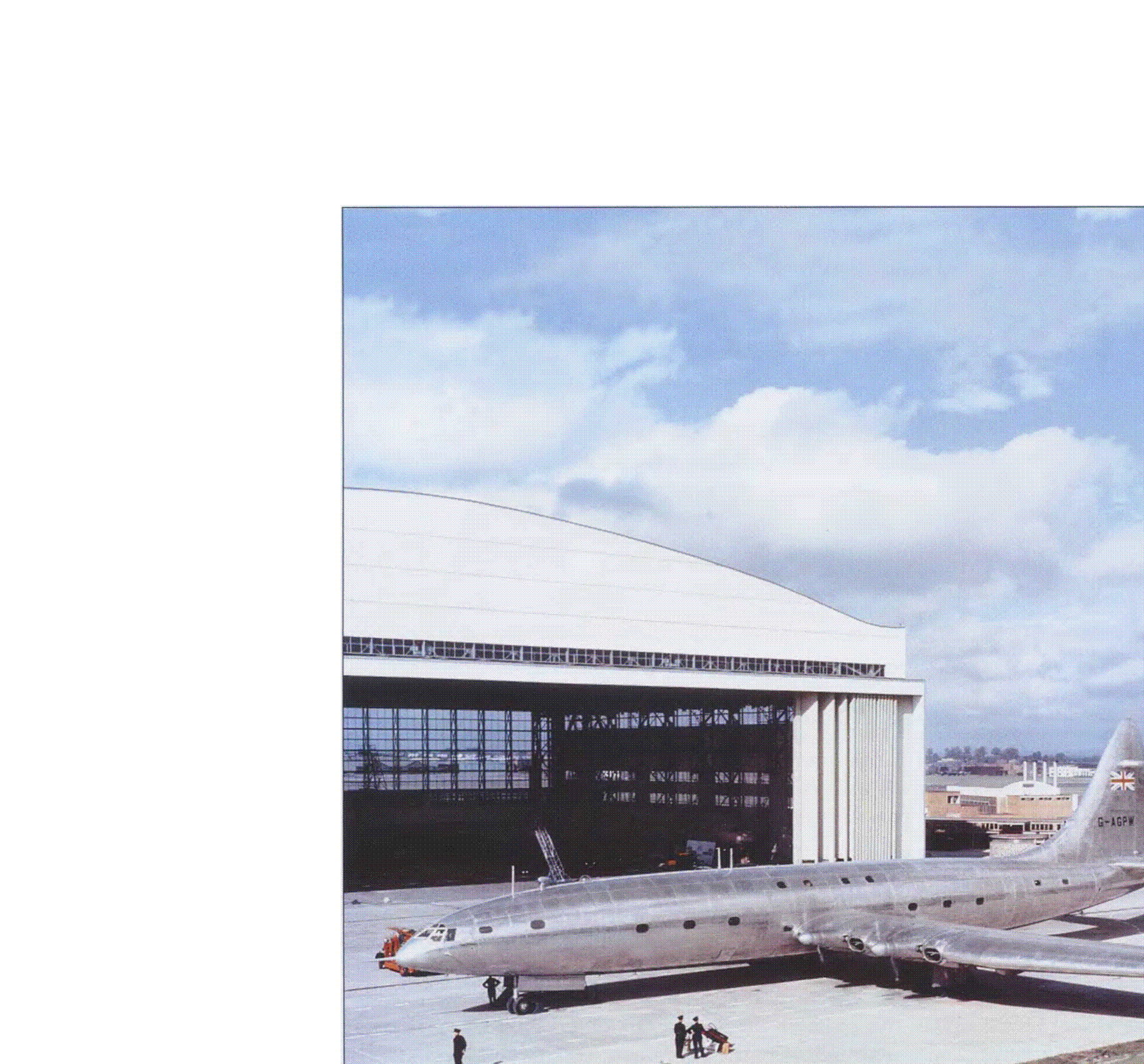Bristol Type 167 Brabazon
Perhaps most ambitious within the Luxury Airliner category of contestants, Bristol’s Brabazon Mark One airliner was a true behemoth in all regards. The aerodynamic answer to the question of more passengers and more range was, in those days of World War II and immediately thereafter, to simply take a given, typical airplane shape along with the ratio of its parts, and inflate them. For instance, if you need more lift to carry
all that new payload, simply design a giant wing to do so. Or a bigger fuselage and tail group to handle more passengers. Fience the Brabazon was a very large aircraft in all proportions. So large, in fact, that Bristol had to lengthen the runway at its Filton works, which necessitated the destruction of an entire village in order to build on to the pavement. Also, two new production hangars were constructed to produce these giants. The wing camber was so thick and high that a man could easily walk upright through the center wing area had it been open, and each wing had a bumper on its underside tip to absorb the inevitable runway impact during a crosswind operation.
The Type 167 was named after Lord Brabazon, an influential aeronaut cum aviation booster who chaired the committee that bore his name during World War II. That group of men laid the groundwork for all the future postwar airliners that Britain should produce, with differing specifications for differing roles. The largest airplane would be the transatlantic flag carrier. Thus, as Bristol embarked on the building of the great international airliner in March 1943, it seemed only appropriate to name it for its founding mentor.
The Brabazon had a wingspan of 229 feet, cruised with its low-speed airfoil shape at a stately 250 mph, and could carry up to 180 pampered passengers in compartmentalized style on two separate decks. Bristol and British Overseas Airways Corporation (BOAC) liked to compare the interior of the airplane to that of a luxury salon railway car, offering a lavish 200 square feet of luxury space per passenger (in the 100-passenger

configuration) so as to help them survive the interminably long flights across the North Atlantic. As with the other aircraft we are discussing in this section, the Brabazon was striving to be the “last word” in air travel in the late 1940s. Features included a cinema, lounge, bar, and ladies’ dressing room, not to mention impeccable British service.
Among the advanced features of the Brabazon, all flight controls were 100-percent hydraulically powered, and it was the first airplane to be so designed. The dual Bristol Centaurus engines per each nacelle were actually buried inside the wing, each at an angle to a central driveshaft turning contra-rotating propellers. Production aircraft, starting with the Mark Two air
frame, were to be even more advanced powered by Proteus turboprop engines.
Putting this airplane into context, it first flew in 1949, just after the de Havilland Comet made its maiden flight. The contrast could not be more stunning, and served a harbinger of things to come for the “Brab” as BOAC lost all interest in the airplane. British European Airways (BEA) wanted to fly the one-and-only airframe (the never-fully-completed number two aircraft was scrapped) on its service to Paris, but fatigue problems associated with the propeller mountings and an overall flight time limitation of 5,000 hours scotched the idea of revenue passenger flying. By October 1953, the Mark One airframe was broken up for scrap as well.










